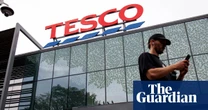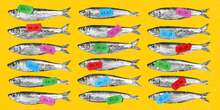Before getting behind the wheel to compete in the 2024 U.S. Grand Prix in Austin, Texas earlier this month, F1 superstar Lewis Hamilton was at Stubb’s BBQ to premiere a new short film.
“Push Push” is a portrait of Hamilton, the ups and downs of his racing career, as well as personal struggles with dyslexia and bullying, weaved into a conversation he has with a group of teens today about their own lives. It’s also an ad for WhatsApp.
It’s the latest piece of impressive sports-related doc film work by the messaging brand. In January, WhatsApp dropped a 30-minute doc about NBA star Giannis Antetokounmpo‘s first trip back to his parents homeland of Nigeria. And in June, the brand won the Cannes Lions Grand Prix for Entertainment for its 26-minute doc “We Are Ayenda,” about WhatsApp’s role in helping the Afghanistan Women’s Youth National Football Team escape the Taliban.
Behind much of this impressive run in utilizing entertainment to tell a brand story is the agency Modern Arts. Founded in 2023, it’s the latest in a handful of shops that are effectively bridging the gap between Hollywood and Brandland.
The bridge is clear in its leadership. CEO Brooke Stites is a veteran of award-winning agencies Wieden+Kennedy, TBWA/Media Arts Lab, and 180LA. Co-chief creative officers Adam Groves and Zac Ryder are long-time vets of Anonymous Content, the production and management company behind award-winning brand work, as well as acclaimed films and TV.
WhatsApp CMO, Vivian Odior, calls Modern Arts a great strategic partner. “At their core, is a mission to help brands meet their business needs creatively, especially through the lens of storytelling and real user stories,” says Odior. “This focus has been a powerful tool for us as we often find that the best way to establish WhatsApp is to showcase the supporting and connecting role we play in people’s lives. Together, we have told great stories.”
Ryder says that what became clear in the years he and Groves spent at Anonymous, and the time Stites spent particularly in the W+K ecosystem, is that the way to help brands become more entertaining isn’t by hewing to the same model that’s been around since the dawn of the commercial. “What we actually have to do is kind of break that model and bring in a totally different kind of thinking in order to start to make that kind of work,” says Ryder.
Modern Arts is their swing at making their own model.
Inside Modern Arts’s strategy
Straddling the gap between entertainment and brand marketing is nothing new. Most ad nerds would agree that the birth of modern brand entertainment can be traced back to 2001’s BMW Films—a series of short films directed by Hollywood directors and starring Clive Owen.
It opened the aperture of what brands could create in order to build a connection with their audiences, just as the internet was splintering that audience in a million different directions away from traditional advertising channels like TV and radio.
Jae Goodman and John Kaplan have been pioneers in this space since they started working together at CAA Marketing, then Observatory, now Superconnector Studios. ACE Content is an off-shoot of ad agency Anomaly, led by a mix of agency vets and award-winning producers that has created effective, entertaining work for brands like Google, Marriott, Hoka, LVMH, and more.
Modern Arts joins them as one of the few purveyors of the brand entertainment that truly have the bench depth across both the brand world and Hollywood. The founders saw an opportunity to create their own version of the model.
Anonymous Content is not only a production company, but manages hundreds of writers, directors, and actors. While at Anonymous, Ryder and Groves were tasked with drawing on that talent to make stuff for brands. They quickly realized that some of their most compelling brand work challenges were being solved with the help of a showrunner or a screenwriter, who would be briefed just like a traditional ad agency’s copywriter or art director.
A new era for Hollywood
The number of U.S. productions in Q2 2024 was down 40% compared to 2022. Given those circumstances, particularly since the writers strikes, more Hollywood talent is willing and enthusiastic to work on a wider spectrum of projects.
“The output at the end was always something really unexpected, which got the brands really excited,” says Ryder. “As we were able to tinker with that model over those six or seven years, we realized that if we’re going to start a new company, we need to double down on that idea.”
That led to the Modern Arts model, taking ad agency fundamentals like account management, leadership, strategy, and planning, and combining it with a reimagined creative department that combines traditional ad creatives with Hollywood-tested showrunners and screenwriters, as well as journalists.
“Push Push,” for example, is directed by Alex Russell, an Emmy-winning screenwriter whose work includes TV hits like The Bear, Beef, and Dave.
“We’re actually able to bring audiences the kinds of stuff that they’re already out looking for in the world, because we’re making it with the people who are creating the pop culture they already love,” says Ryder.
The work
Brand entertainment means much more than short films, and Modern Arts is working to expand its own definition as well.
View this post on Instagram A post shared by John McSwain (@vacationsonline)
View this post on Instagram
A post shared by John McSwain (@vacationsonline)
For Adobe, the agency created an unscripted TV series called Full Bleed, celebrating individuals at the forefront of creativity, that is streaming on Roku. Each 30-minute episode takes viewers inside a different creative project in history. The first episode looks at architect Daniel Libeskind’s 10-year reimagining of Ground Zero. In episode two, we learn the story behind designer Lance Wyman’s iconic logo for the 1968 Mexico Olympics. And people are watching. According to the company, 88% of the people who start an episode complete almost the full 30 minutes. When HP asked for innovative ways to connect with gamers in China, the Modern Arts team looked at tapping into the community’s passion for manga. To do that, they recruited Phil Gellat, the writer of Netflix’s Love, Death and Robots, one of the most popular TV series among Chinese gamers. The result was a digital manga series called The Way Forward. In August, the brand dropped Volume 2 called Mirror Maze, inspired by a fan’s idea.
Still, short doc-style films are a sweet spot. Scripted work often takes many months to produce, which can be too slow for a brand looking to hit the zeitgeist, or longer than a CMO’s tenure. So far, it’s working. WhatsApp’s “We Are Ayenda” is streaming on Prime Video, and got 550 million impressions through earned media coverage.
CEO Stites says that they’re always looking for a specific Venn diagram between the brand, who and what the audience wants, and where the audience is. “Uncovering those insights fuel the storytelling, as well as what format it takes,” says Stites. “I think that that’s what people are responding to, and what creates content that people want to seek out versus just being served.”







No comments